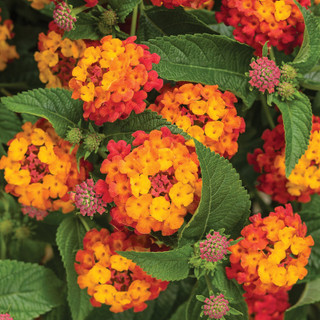Bluebeard
Uses:
- Wildlife Gardens
- Garden Borders
- Container Gardens
Features:
- Drought & Heat Tolerant
- Deer Resistant
- Attracts Pollinators
Sunlight:
- Full Sun
- 6+ Hours of Direct Sun
Growing Zones:
- 5-9
- What is My Zone?
Bluebeard, Caryopteris, is a drought tolerant shrub that attracts bees, butterflies & hummingbirds. The leaves have a nice sage-like scent, and often contrast from the flowers to create a beautiful combination.
Bluebeard Information
If you want a shrub that bursts with mid to late spring color and thrills butterflies and bees, you can grow Caryopteris (C. x clandonensis). Also called bluebeard, blue mist, and blue mist spirea, caryopteris plants actually are part of the mint (Lamiaceae) family, a recent change from their former placement in the verbena family. Regardless, they are nothing like a spirea, but the name has stuck.
Caryopteris is a drought-tolerant shrub that has pretty, sage-like pale green leaves. The leaves have a nice, light scent. They drop in winter (it is deciduous) but begin emerging in late spring or early summer. You can leave the brown seed heads on for some winter interest; blue mist still will maintain its shrub shape with dry, light brown stems.
The plant comes from Asia, so it is not native to North America. That does not seem to bother pollinators and these shrubs do not spread, unlike its mint relatives. Still, you can prevent it from self-sowing (dropping seeds to create new plants) by pruning it in fall as soon as all the flowers fade.
It’s drought tolerant, a pollinator magnet and an easy to care for plant!
Bluebeard Companion Plants
Plants that go well with bluebeard are tough and heat loving perennials, annuals and shrubs. A few of our favorite plants go grow with bluebeard are lantana, salvia, sedum, coneflowers and black-eyed susans.




